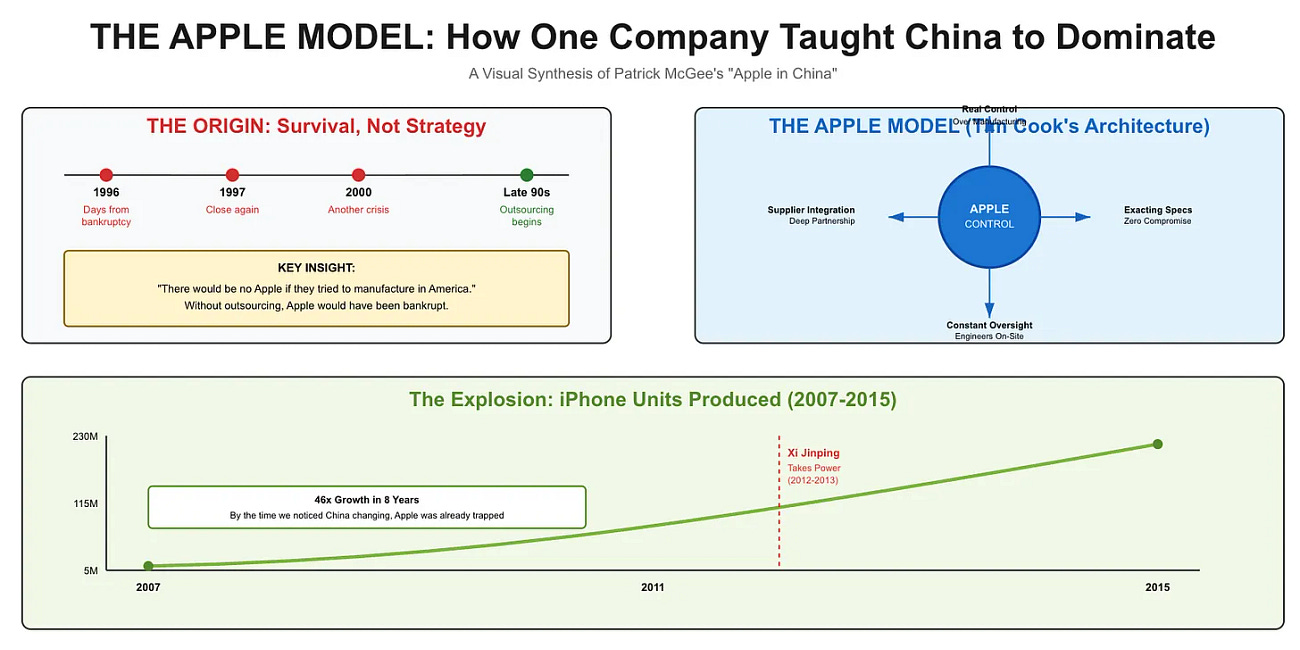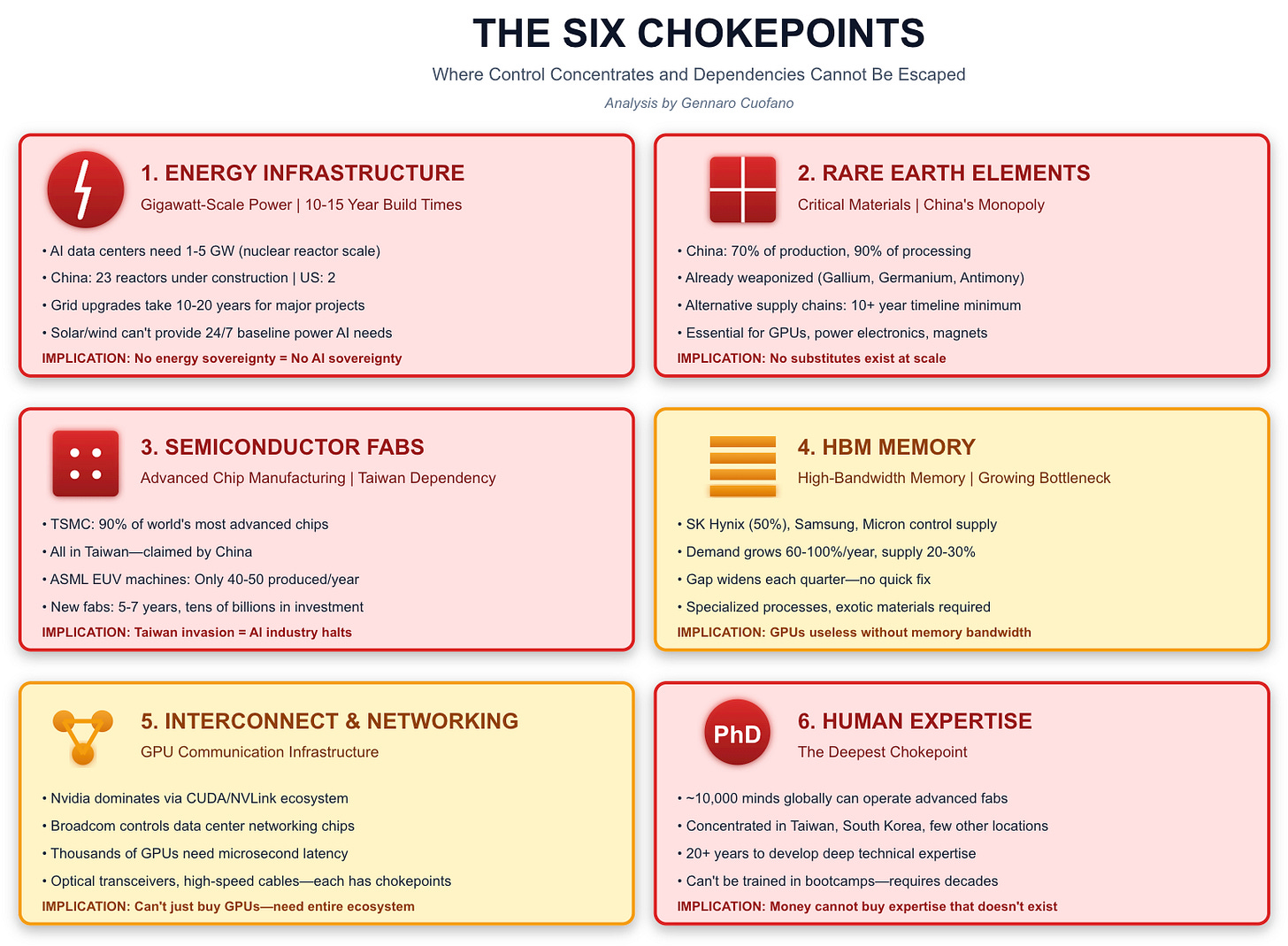AI Supply Chain Chokepoints & the New World Order
For three decades, we told ourselves a comforting story about technology: that software was eating the world, that bits would triumph over atoms, that the magic of code and cloud computing had transcended the constraints of physical reality.
AI is shattering that illusion with the force of thermodynamic law.
In a recent conversation with Patrick McGee—Financial Times reporter and author of “Apple and the Agents of China”—about how Apple built its empire through Chinese manufacturing, a more uncomfortable reality emerged: the infrastructure required for the AI revolution is not virtual, not scalable, and not geopolitically neutral.
Apple in China with Patrick McGee
Patrick McGee’s “Apple in China” isn’t just a business book—it’s a chronicle of how the world’s most valuable company became inextricably tied to America’s chief geopolitical rival, transforming both in the process.
Unlike software, which can be copied infinitely at zero marginal cost, AI requires massive physical infrastructure that must be manufactured, powered, cooled, and maintained. And the chokepoints in this infrastructure are concentrated in the hands of strategic rivals, creating dependencies that make Apple’s reliance on China look quaint by comparison.
This isn’t just about supply chains. It’s about the fundamental architecture of power in the age of artificial intelligence.



